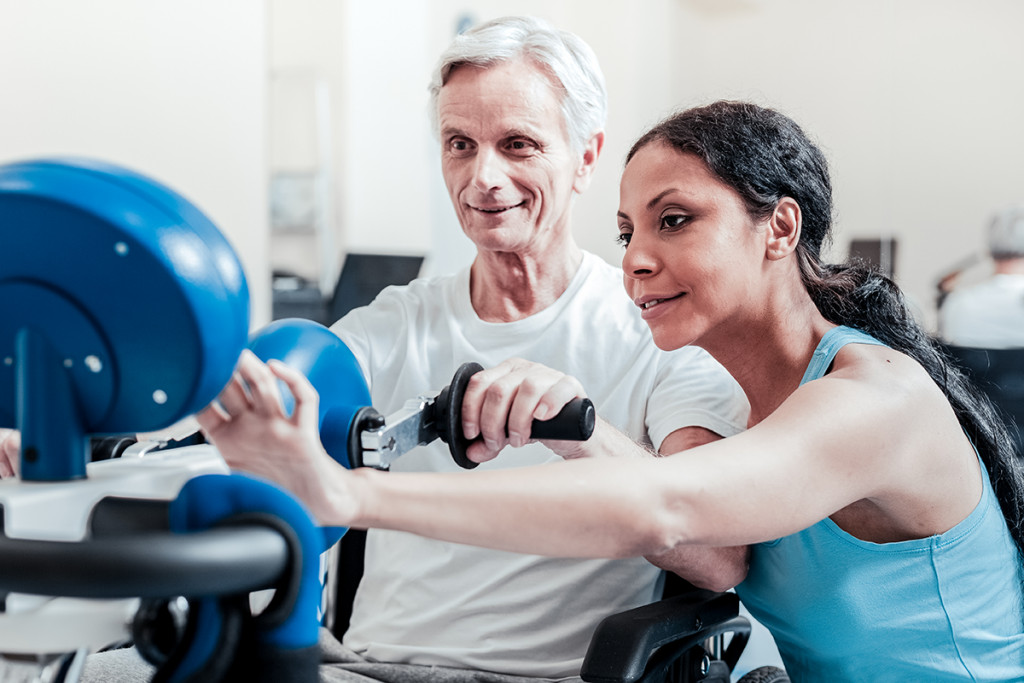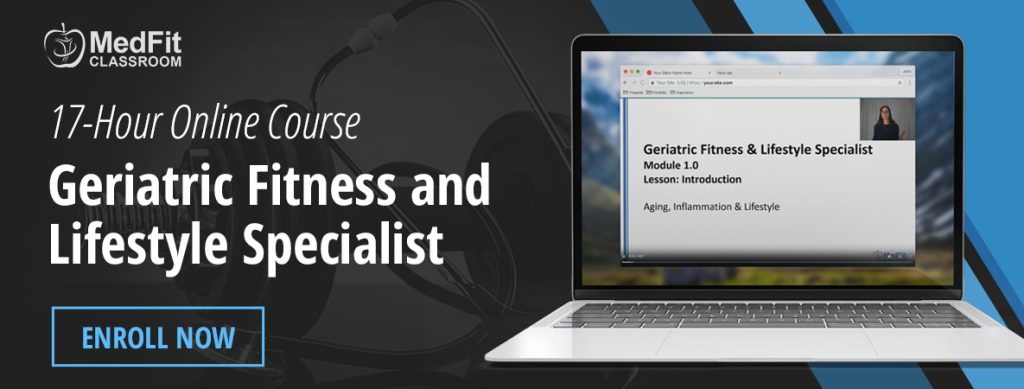Teaching proper and biomechanically safe movement patterns takes a keen understanding of each pattern. What muscles and joints are involved? What skills are required for good execution? What deficiencies does the client have based on your preliminary movement assessments? Begin with the simplest version of each fundamental movement pattern and build on the complexity and intensity slowly.
Adjust accordingly, and encourage the client to give honest and precise feedback as they are learning. Find out if there is discomfort physically and/or psychologically. Adjust again. You want your client to feel successful and excited about their accomplishments during the exercise session and overall. They need to feel confidence in their ability to learn and improve, and enjoy the learning experience while they get stronger and more functional. Learning to exercise properly and safely is hard work for our clients. We must progress them gradually and with well thought out, logical, and achievable progressions. Knowing when they need to rest and reset is essential to building trust with the client, and creating a positive learning experience for them.

Fatigue and the Body/Brain Duo
It is critical that researchers consider the brain as well as the body when examining fatigue development and its impact on the body. By looking at brain and muscle function simultaneously, they will see that when participating in highly cognitive tasks, brain resources are divided which may speed up the development of physical fatigue. Processing and executing detailed and complex exercise instructions can accelerate the onset of body fatigue.
A study conducted by Ranjana Mehta, PhD., assistant professor at the Texas A&M Health and Science Center School of Public Health, evaluated the interaction between physical and mental fatigue and brain behavior. The study showed that when we attempt mental tasks and physical tasks at the same time, we activate the prefrontal cortex of our brain. This can cause our bodies to become fatigued much sooner than if we were only participating in a physical task. (Study published online as: Human Factors: The Journal of the Human Factors and Ergonomics Society This study was co-authored by Raja Parasuraman, Ph.D., professor of psychology at George Mason University in Virginia)
When we are working with geriatric clients, and one of our objectives is educating them, we must be cognizant that the lesson material must be “dosed-out” in absorbable amounts. Keeping the instructions simple and concise for maximum understandability is advised. When combining actual physical movement with the processing and following the instructional cues, the client is working extra hard and fatigue can set in sooner than you had planned. You may notice them starting to lose attentiveness or move slower. They may abruptly stop what you have them doing. They may look a bit frustrated or flustered. They have detached from the workout experience. The brain is full. The body feels tired. They need a break.
Taking pause to re-assess and re-set allows time for the client to recover mentally and physically. It is also a good time for the trainer and client to decide how to adjust and move forward in the session. Switching to less physically demanding, easy-to-do exercises feels like a relief to the client. They experience ease and a sense of control as their body and mind restore.
You can resume the previous exercise if the client wants to. If they are done with that hard thing, they are done. Save it for the next session to practice or learn again, and celebrate the effort and attention that the client gave the exercise that day. Educate them on the facts surrounding fatigue levels after learning and practicing complex physical movement. Tell them the cognitive benefits of combining cognition with physical effort!
Fit Pros: Guide Older Clients as a Geriatric Fitness and Lifestyle Specialist
Millions of people over age 65 looking for guidance from fitness professionals who are knowledgeable in exercise, nutrition and lifestyle principles that can help them improve functional mobility, while also preventing and managing chronic conditions to live their highest quality of life. The Geriatric Fitness and Lifestyle Specialist online certificate course will give you insights, strategies and tools to be a successful professional in this rapidly growing market. Learn how to be a valued part of clients’ continuum of care, working with the medical team to improve functional outcomes and positively impact people’s lives.

Holly H. Benson, BS, is a veteran in the Recreation and Fitness industries with over 35 years of administrative and technical experience. She holds two bachelor’s degrees, Corporate & Community Fitness and Recreation Administration, and numerous fitness certifications. She has developed thriving fitness programs for special populations and has passionately focused her career on the much older adult. She currently owns and operates Moving Strong Medical Exercise, LLC in Lakewood, Colorado and provides in-home and virtual fitness training to older adults and persons with chronic medical and orthopedic conditions.
